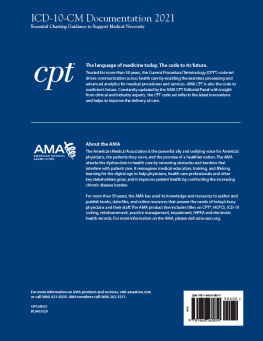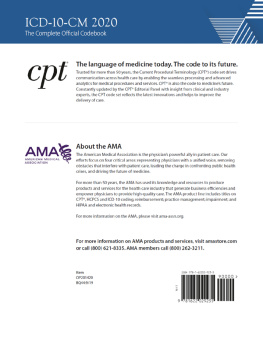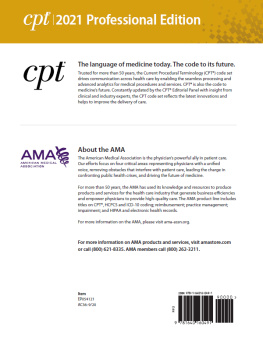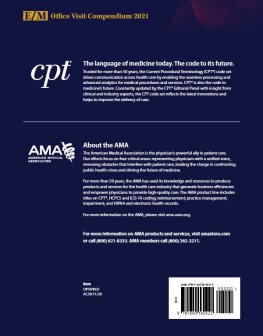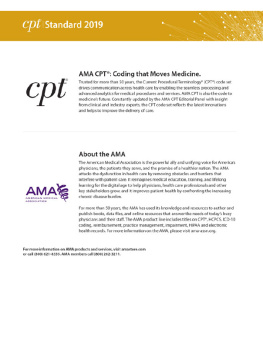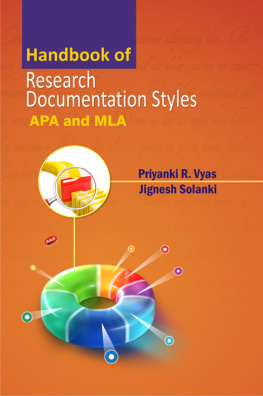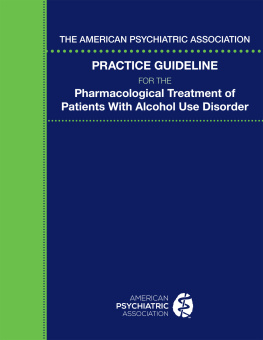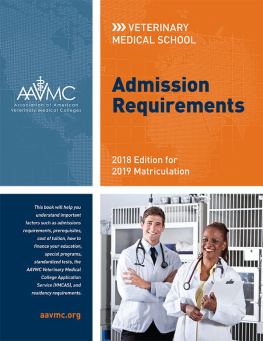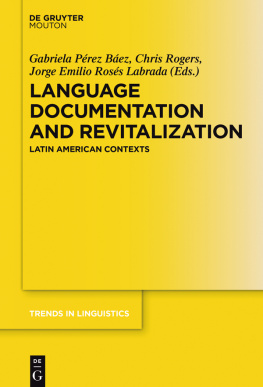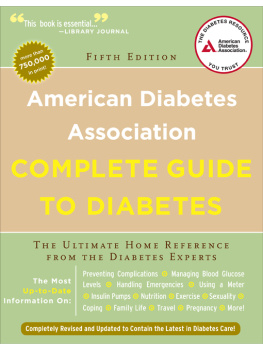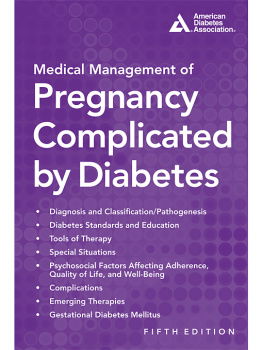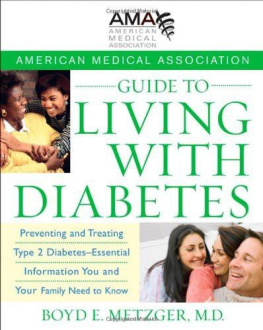ICD-10-CM Documentation 2021:
Essential Charting Guidance to Support Medical Necessity
Published by DecisionHealth, a Simplify Compliance brand
100 Winners Circle, Suite 300
Brentwood, TN 37027
(855) 255-5341
www.codingbooks.com
Copyright 2020 DecisionHealth
All rights reserved
ISBN: 978-1-64016-085-9
Item Number: OP168021
Disclaimer
No part of this publication may be reproduced, stored in a retrieval system, or transmitted, in any form or by any means, electronic, mechanical, photocopy, recording, or otherwise, without the prior written permission of the publisher. This publication is sold with the understanding that the publisher is not engaged in rendering legal, medical, accounting, or other professional service in specific situations. Although prepared for professionals, this publication should not be utilized as a substitute for professional service in specific situations. If legal or medical advice is required, the services of a professional should be sought.
Our Commitment to Accuracy
The American Medical Association (AMA) is committed to producing accurate and reliable materials. To report corrections, please call the AMA Unified Service Center at (800) 621-8335. AMA publication and product updates, errata, and addenda can be found at amaproductupdates.org.
To purchase additional copies, contact the AMA at 800 621-8335 or visit the AMA store at amastore.com. Refer to item number OP168021.
Acknowledgements
Maria Tsigas, Product Director, Information, Print Subscription Products & Services
Renee Dudash, Senior Manager of Operations
Matt Sharpe, Senior Manager, Creative Layout
AnnMarie Lemoine, Team Lead, Creative Layout
Nicole Grande, Senior Layout Artist
Richard Scott, Associate Content Manager
Lori Becks, RHIA, Clinical Technical Editor
Laura Evans, CPC, Senior Content Specialist
Susana Lambert, Production Editor and Coordinator
INTRODUCTION
Introduction
Documentation is one of the central elements that underlie patient care, coding and billing for patient care, and an effective compliance plan. Many diseases, disorders, injuries, other conditions and even signs and symptoms require specific documentation to be compliant with the code structure and provide diagnosis coding to the highest level of specificity for accurate reporting and reimbursement. An ongoing review of documentation practices will help to determine if corrective changes are needed. The ICD-10-CM Documentation: Essential Charting Guidance to Support Medical Necessity is designed to address this need.
Documentation and Coding
In this book, three aspects of ICD-10-CM coding and documentation are addressed. The first relates to documentation requirements. Before actual medical record documentation can be analyzed, physicians and coders must understand the ICD-10-CM requirements for commonly reported signs, symptoms, diseases, and other medical conditions. Frequently, codes capture specific information about the condition itself. For example, strep infections of the throat and tonsils must be specifically identified as strep throat or strep tonsillitis; and for patients with strep tonsillitis, the condition must be specified as acute or acute recurrent.
Codes may also capture a disease and related conditions. For example, there are combination codes that capture the type of diabetes and specific manifestations or complications, such as Type 2 diabetes with hypoglycemia, which must also be specified as with or without coma. Some codes capture a condition and common symptoms, such as intervertebral disc disorders with radiculopathy. ICD-10-CM Documentation: Essential Charting Guidance to Support Medical Necessity covers many commonly reported diagnoses and reviews the necessary documentation elements so that providers and coders have a good understanding of what documentation is required based on the available codes for the condition.
The next aspect of coding and documentation that is addressed is the analysis component. Each condition covered in the book includes a bulleted list of coding and documentation elements. This list is designed to be used for actual documentation analysis. A documentation and coding example is provided with bolding of the portion of the documentation that captures the information required for ICD-10-CM code assignment. Coders will need to remember that physicians do not always document using exactly the same terminology in the code descriptor. However, that does not mean that a specific code cannot be identified.
The physician may use an alternate term that describes the same condition with the necessary level of specificity. So coders will need to rely on and enhance their knowledge of medical terminology and synonymous terms. In addition, coders will need to rely on coding instructions in the Alphabetic Index and Tabular List as well as the ICD-10-CM Official Guidelines for Coding and Reporting to determine whether the most specific code can be assigned from the documentation provided or whether the physician will need to be queried.
The last aspect of coding and documentation addressed is documentation improvement. Several documentation checklists are provided in for physician feedback related to specific conditions. These checklists can be used to identify any missing documentation elements required to assign the most specific code. Information contained in the checklists can be compiled for each physician and any documentation deficiencies identified. Documentation and coding checklists for conditions not addressed in this book can also be created for other conditions using the formats of the checklists provided. There are a few different formats and styles of checklists so users can determine which style works best for their practice and then create additional checklists using that format and style.
In addition to the coding and documentation checklists there are clinical documentation improvement bulleted lists for three conditions that are often lacking sufficient documentation in the inpatient setting. The information in these lists identifies common indicators of the condition so that the physician can be queried to determine if the condition should be included as a diagnosis in the medical record or can be coded to a more specific diagnosis.
Documentation and Compliance
Complete and accurate provider documentation is a continuous concern for physicians and hospitals alike. In addition to supporting quality patient care and serving as a legal document to verify the services provided, provider documentation is also needed to support correct coding initiatives, coding and documentation audits, and Medicare oversight reviews.
The Social Security Act and the Centers for Medicare & Medicaid Services (CMS) regulations require that services be medically necessary, have documentation to support the claims, and be ordered by physicians. Consistent, current and complete documentation in the treatment record is an essential component of quality patient care according to the National Committee for Quality Assurance. Specific documentation criteria are required for inpatient medical records by the Joint Commission on Accreditation of Healthcare Organizations and the federal Conditions of Participation. In addition to accreditation standards and federal regulations, medical record documentation must also comply with state licensure regulations and payer policies, as well as professional practice standards. Compliance and accurate reimbursement depend on the correct application of codes, which is based on provider documentation. In addition to the reimbursement implications, provider documentation is also used in quality improvement initiatives.


